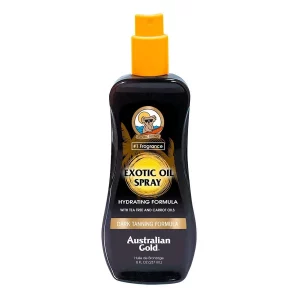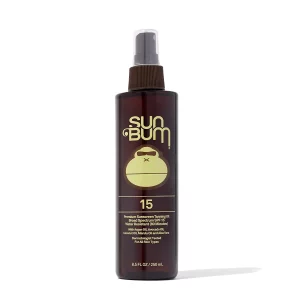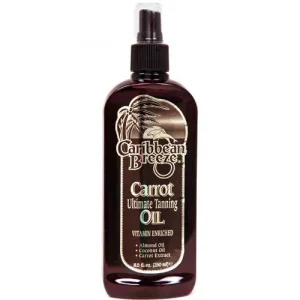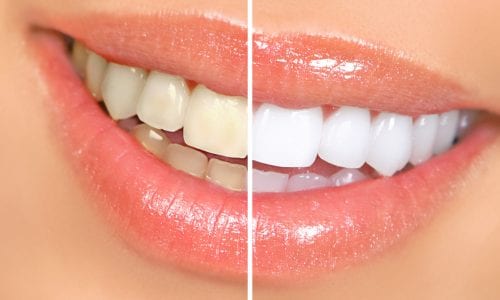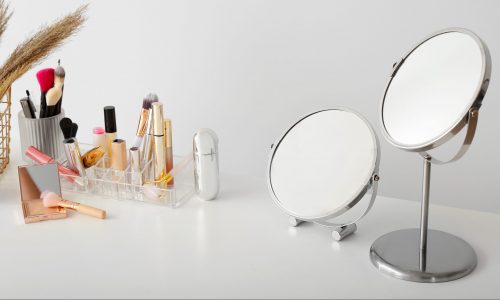The Best Tanning Oil
We looked at the top 9 Tanning Oils and dug through the reviews from 21 of the most popular review sites including and more. The result is a ranking of the best Tanning Oils.

Our Review Process
Don't Waste Your Money is focused on helping you make the best purchasing decision. Our team of experts spends hundreds of hours analyzing, testing, and researching products so you don't have to. Learn more.
Our Picks For The Top Tanning Oils
- 1. Hawaiian Tropic SPF 15 Coconut Tanning Oil
- 2. Australian Gold Tea Tree & Carrot Tanning Oil
- 3. Carroten Vitamins A & E Tanning Oil
- 4. Sun Bum SPF 15 Hypoallergenic Tanning Oil
- 5. Just Nutritive Silicone-Free Vegan Tanning Oil
- 6. BALI BODY Cacao Paraben-Free Tanning Oil
- 7. Bondi Sands Quick Drying Tanning Oil
- 8. Caribbean Breeze Carrot Extract Tanning Oil
- 9. Banana Boat 15 SPF Water-Resistant Tanning Oil, 2-Pack
A combination of natural oils give you SPF 15 protection against both UVA and UVB rays. The formula also builds in nourishing antioxidants to help keep your skin looking and feeling great. The product comes in an 8-ounce spray bottle to make it both portable and easy to use.
Soothes and ProtectsNourishing antioxidants help hydrate your skin while also protecting it from the sun’s harmful rays.
With this tanning oil, you get a combination of carrot oil and other oils to enhance your tan while also moisturizing your skin. Tea tree oil and Vitamin C help keep your skin healthy and nourished. The light, tropical scent will take you to the islands even when you're tanning at home.
Easy to UseThe nongreasy formula absorbs quickly to let you spray the oil on and quickly resume your activities.
Oils from natural sources like carrots and coconuts help boost your tanning while also keeping your skin moisturized. The 4.23-ounce glass bottle slips handily into your beach bag while also being easy to store between tanning sessions. The formula is water resistant, allowing you to wear it even while swimming.
All-Day WearFor those busy days on the beach, consider this tanning oil, which is water and stress resistant for an all-day option.
This 8-.5-ounce spray bottle features a tanning oil that nourishes and protects your skin while also helping you get tan. It has SPF 15 UVA/UVB protection to help block out the more harmful rays while you're tanning. Natural oils and aloe vera will help keep your skin healthy and hydrated.
Versatile OptionNo matter your skin type or how you’re spending your day, this tanning oil has you covered with a formula you can fit to your needs.
Buying Guide
As the largest organ in the body, your skin makes an impression. Some spend hours in the sun to get that all-over glow, but the melanin in your skin actually helps protect your cells against harmful ultraviolet rays.
Melanin is produced by melanocites found in your skin. The amount of melanin that melanocites produce varies from one person to another, though. The more melanin found in your skin, the darker you are. You can lounge by the pool or go to a tanning bed to boost your melanin, but how quickly you’re able to achieve the desired shade depends heavily on how your melanocites produce melanin.
There are products that can help level the playing field a little. Tan accelerators have been available for decades, with formulas that boost the amount of melanin those melanocites produce. Obviously, you’ll need UV rays to work with that melanin to make you darker, but with the right formula, you may be able to get a deeper color faster.
The biggest consideration when you’re working on your tan is safety. Although it might seem counterintuitive if you’re trying to get a suntan, SPF protection can keep you safer while you tan. Look for a sunscreen that has an SPF of at least 30, and make sure it offers “broad spectrum UV protection.” This means it protects you against both UVA and UVB rays. Sunscreen of SPF 30 will reduce your exposure to harmful rays without blocking out the sun completely.
You’ll also want to make sure you don’t stay in the sun too long. Melanin production tends to dwindle after a couple of hours, which means you’ll no longer get the benefits but you’ll still put your skin at risk. A tan accelerator can benefit you if it shortens the length of time you spend in the sun, but avoiding excessive sun exposure is best where skin cancer is concerned.
Why we recommend these tanning oils?
Products Considered
Products Analyzed
Expert Reviews Included
User Opinions Analyzed
Our experts reviewed the top 9 Tanning Oils and also dug through the reviews from 21 of the most popular review sites including and more. The result is a ranking of the best of the best Tanning Oils.
DWYM is your trusted roduct review source. Our team reviews thousands of product reviews from the trusted top experts and combines them into one easy-to-understand score. Learn more.
What to Look For
- Tanning is only part of the equation. You’ll also want to nourish and moisturize your skin, particularly if you’ll be out in the sun all day. Look for a tanning oil that softens your skin while it helps you achieve that glow.
- Too much UV exposure can damage the skin. Antioxidants can help offset some of that damage, and some even believe it can help slow down the aging process. You can find plenty of tanning oils that include antioxidants among the ingredients.
- There are plenty of natural oils that are thought to accelerate melanin production without forcing you to rely on chemicals. Oils in themselves stimulate melanin production, but some natural oils not only accelerate tanning but bring moisture to the skin. Olive oil and coconut oil are especially helpful.
- Foods rich in beta carotene can give you a more golden tan than you’d get without them. Consider adding carrot juice to your diet. An added benefit of carrot juice is that over time, it will help you build up a small amount of SPF protection.
- Tanning oils can be much messier than the thicker creams found with sunscreens. For that reason, many of today’s most popular oils come in a spray bottle format, making application a breeze.
- Chances are, you’ll want to take your tanning oil on the go with you. Look for a bottle you can easily slide into your beach bag or tote. Also consider where you’ll store it between uses.
- Some tanning oils can be greasy, taking a while to dry and leaving behind an unpleasant greasy film. Look for a spray tanning oil that dries quickly, allowing you to apply and immediately resume your activities.
- If you’re wearing your tanning oil while sweating or hopping in the water, look for a formula with some water and sweat resistance. Even if you go for that option, though, make a point of stopping to reapply every so often.
More to Explore
Before the 1920s, pale skin was widely accepted as fashionable among Europeans and those who settled in the United States. But like many fashion trends, Coco Chanel is thought to have brought the trend of tanning to the masses. The story goes that Chanel was suntanning in the French Riviera in 1923 when she was photographed. From that point forward, fashionistas sought that bronze glow.
The first tanning oil came along in 1928, followed in 1935 by L’Oréal’s Ambre Solaire, which had the ability to filter UV rays while tanning. In the 1940s, Coppertone introduced the first sunblock, but it didn’t really take off until the 1950s with the Coppertone Girl ad campaign.




